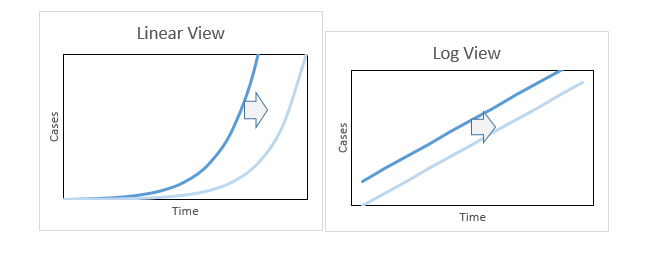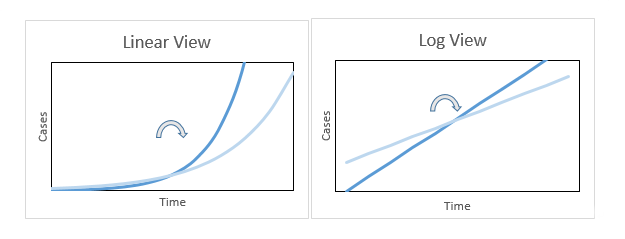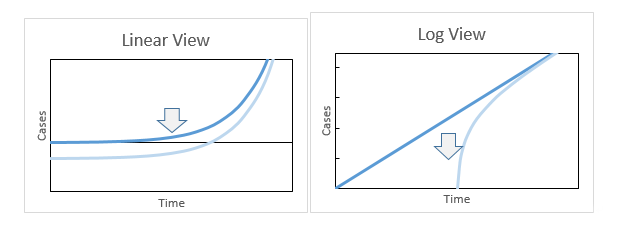
Country groupings define economic eras. From the 1980s to the 1990s, the “Asian tigers” – South Korea, Taiwan, Hong Kong, and Singapore – attracted global attention for their export-oriented policies and manufacturing competence. This moniker gradually fell into disuse following the Asian financial crisis, to be replaced by the BRICS. Brazil, Russia, India, China, and South Africa represented a new generation of emerging market economies, whose wealth was driven by their surging internal demand and commodities exports rather than manufacturing.
COVID-19 marks the start of a new economic era. Although affected countries hope that it will be a temporary phenomenon and that business will return to normal after a certain period, this seems unlikely. A vaccine is still at least a year away.
It remains to be seen to what extent developed Western countries will eventually accept local transmission of the virus, as with the seasonal flu, or whether major elements of their economies will remain closed indefinitely. Either outcome mark be a major blow to their global status. Many parts of the developing world, meanwhile, will be devastated.
One group of countries has however so far managed to avoid both of these harsh fates. As it turns out, the next group of standout performers, just as in earlier decades, seems to be the Asian tigers. How have they managed this repeat performance? A simple lesson on the math of the exponential function, which some of us will remember from high school, may illustrate the different policy approaches that any country has available. Math is not science, but the math does require that any solution to the current predicament will fall into one of three basic strategies. Most countries are now working on the first and second strategies, but only Asian countries have managed to implement the third.
Epidemics work differently from most situations encountered in finance. It is hard to think of a financial quantity that is not expressed as a ratio. In the case of an epidemic, on the other hand, per capita figures are mostly useless. Unless a part of a country is sealed off completely, it is safe to assume that the epidemic will eventually spread throughout. The only experience most bankers have with an exploding exponential curve is compounding interest, which is inherently limited by bankruptcy.
The only useful reference point for the number of new cases is the number of previous ones. A relationship in which the number of new cases today is determined by the number of existing infections yesterday is called exponential. Exponential curves are characterized by a constant rate of spread, which has been measured at 2-3 new cases per existing case.
Only when herd immunity starts to become a factor does population size become relevant. Herd immunity – when enough of the population has been exposed to the virus to protect the few remaining people who haven’t – has been discussed as a factor in the long-term progression of the disease, and the UK originally planned on relying upon it before adjusting its models. The problems with this strategy include the painful process before a majority of the population acquires immunity, measuring population immunity, and understanding whether the immunity would last.
The simple model presented here does not consider these factors, pending further verification. Like any firefighting strategy, it will always be feasible to give up later, but failing to act now would be irreversible.
Buying time
The most basic strategy is a firebreak. Most countries’ first policy response to the outbreak was travel restrictions, and these can be effective in the early stages. Unless they are 100% effective, however, this is simply a delaying tactic rather than a solution.
This strategy is illustrated with an arrow pointed to the right, forward in time. A logarithmic view is convenient for exponential relationships because it shows a constant percentage increase as a straight line, even as the raw numbers explode. That view makes it clear that a shift downwards is equivalent to a lateral shift. [Note 1] All of the successful Asian cases started out by reacting early to the first news of the outbreak, ensuring that they didn’t need to make up for time lost later, but such measures are only useful if the time is used productively to buffer other defenses. If used alone, it is only a short-term response.
SHIFT THE CURVE
Linear log

A longer-term strategy is to ‘flatten the curve,’ a term that has been trending in recent weeks. The rate of spread involves a broad range of factors, both deliberate responses and underlying conditions. Certain cultural habits tie into this variable. The Italian custom of cheek kissing, for example, as well as a general Western habit of shaking hands, may have affected the severity of the outbreaks in the West. Population density may also play a positive role, although less than one might suppose, since even rural residents tend to desire social contact.
This contagiousness variable is the object of economically disruptive policies like “social distancing” and shutdowns. These measures slow down the caseload, freeing up capacity in hospitals. With a lower transmission rate, it also becomes reasonable to wait for other factors to come into play, such as increased medical capacity and new treatment options.
Since this strategy involves a rotation, it is mathematically possible for the slope to also go negative (not shown), thereby changing the direction of the curve altogether. This is the first-level objective of these interventions, but if that’s all they accomplished, the fires would flare back up as soon as they were lifted. In the words of Marc Lipsitch and Yontan Grad, both at the Center for Communicable Disease Dynamics at the Harvard T.H. Chan School of Public Health, “viruses do not remember they were previously under control and will resurge when restrictions are lifted.”
Some subtler aspects of this approach, including different classes of quarantines for the general population and sick but unconfirmed cases, can affect both the economics and efficacy of this approach. Nevertheless, economic considerations for the next year or longer require something better. Halfway measures can produce the worst result of all: expensive remedies that still fail to eradicate community spread.
FLATTEN THE CURVE
Linear log

Where several Asian countries have shined is in investigating the genesis of each individual case. This approach does not change the response recommendations when a case is discovered, but it does allow the majority of the economy to remain open while battle rages on in certain highly localized areas. Importantly, it is only possible to consider this strategy after the first two approaches have already been successfully implemented. In some cases when there are too many untracked infections (like recently in Singapore), it becomes necessary to revert to intrusive lockdowns as a precondition for tracing to become effective again.
The eventual aim must be to reduce the number of cases – not just on a proportional basis but all the way to zero. By tackling the epidemic on a cluster basis, the relationship ceases to be exponential: the number of cases in one period no longer determines the number of new cases in the next. [Note 2] This change is especially apparent in the log chart, represented by the curved line.
BREAK THE CURVE
Linear log

Infrastructure and Public Participation
So how have these Asian countries managed to buck the trend and treat outbreaks on a cluster basis? The answer has a lot to do with the emerging health-tech industry. Taiwan has combined information sources to track possible carriers and enforce quarantine orders. Singapore has created an app using Bluetooth to record proximity information, with user consent; meanwhile Korea has implemented mass testing, bringing its positive test rate down to about 2%, despite its active community spread.
As these examples show, some of these efforts have been led by the governments of the respective countries. To the extent that’s true, it represents a revival of the previous “Asian development model” in which governments interfere in financial flows (and now information flows) to a degree that would make many Western countries uncomfortable. There is however an additional element behind their success. The international media, keen to play up the exotic aspects of Asian systems, and cultural impact of China on the region, has paid less attention to the proactive response from individuals and civil society.
In many cases, schools, hospitals, and other critical links did not wait for government direction to start implementing protective measures, which had an important impact early in the crisis. In Hong Kong, for instance, months of civil unrest had ironically conditioned the population to take matters into its own hands, to good effect. At the beginning of the crisis, it was still illegal to wear masks in public.
This is not to say an authoritarian system like that in mainland China is only capable of a top-down response. One of the many striking images to emerge from the past couple of months has been villagers standing guard and barring entry using homemade tools. The need for direction from above however hampered the response during a few critical weeks in December and January, until the proper political climate could be established. Zhou Xianwang, the outgoing Mayor of Wuhan, cited the need for approval from Beijing to explain the slow reaction which ultimately cost him his job. Despite his evident bias, his defense is credible.
The long-term economic implications of the COVID-19 outbreak remain highly uncertain, subject to further research on characteristics of the disease, the success of (and political will for) lockdown policies, secondary financial, supply chain, and geopolitical reverberations, and many more uncertainties. It is clear, however, that the ability to stay in business for the now will prove to be a powerful short-term, if not long-term economic advantage, depending on the viability of herd immunity and a vaccine, as discussed above. Several Asian countries have demonstrated the ability to master the logic of exponential spread. The global economy now depends upon this knowledge.
Note 1: This situation can be illustrated using the equation for an exponential function
Note 2: Instead of modelling the intervention a as change in the rate of spread,